1. Use Decorative Gravel
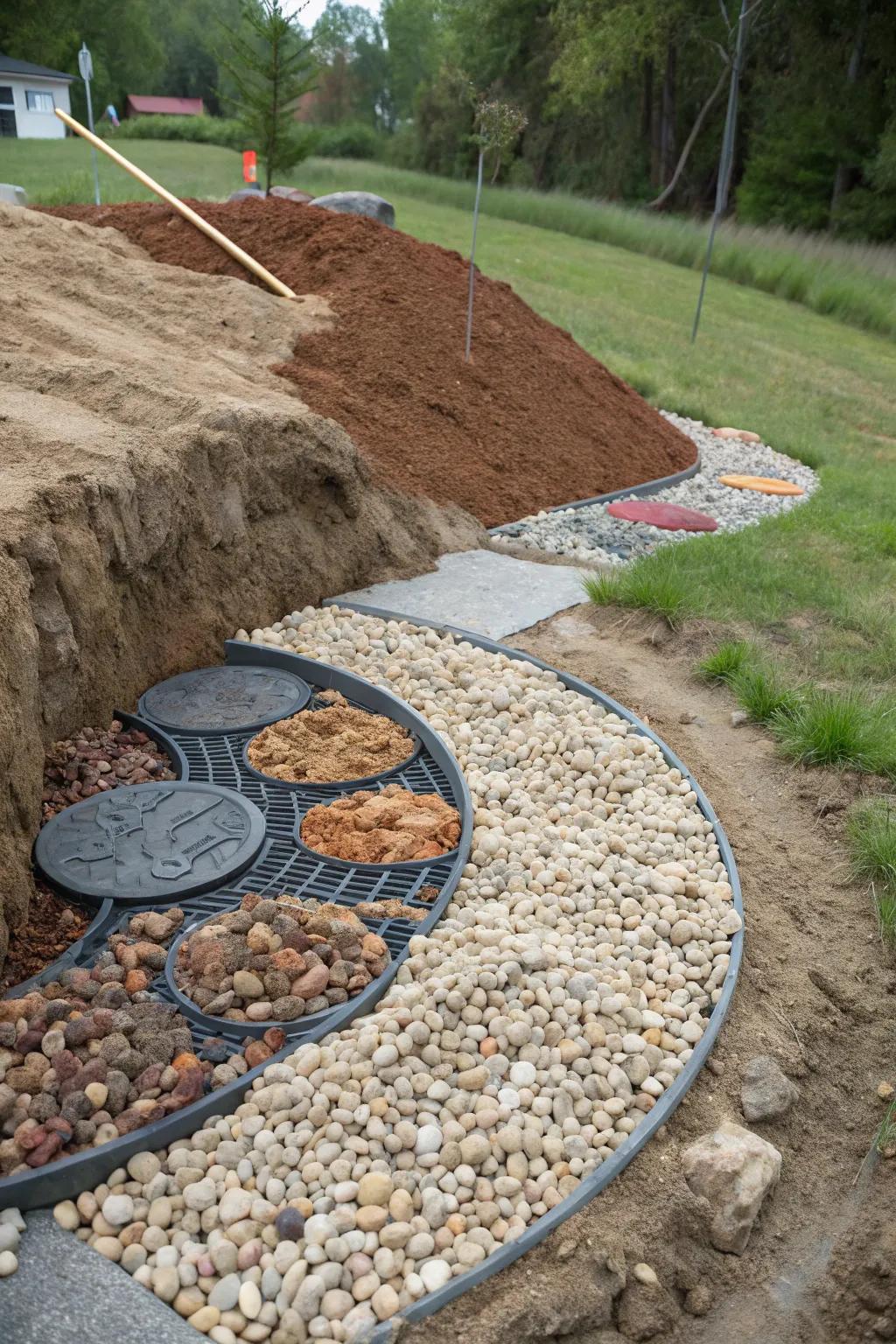
Decorative gravel can be a low-maintenance ground cover that adds color and texture. It’s an easy way to highlight pathways or create borders around plantings.
Items that may come in handy:
- Multi-Colored Decorative Gravel Stones: Enhance your landscape with vibrant gravel stones, perfect for stylish pathways and borders.
- Gravel Border Edging Kit: Define garden spaces effortlessly with this gravel edging kit for neat and attractive borders.
- Gravel Pathway Stabilizer: Maintain a stable and durable gravel pathway with this easy-to-use stabilizer.
2. Use Native Plants for a Natural Look
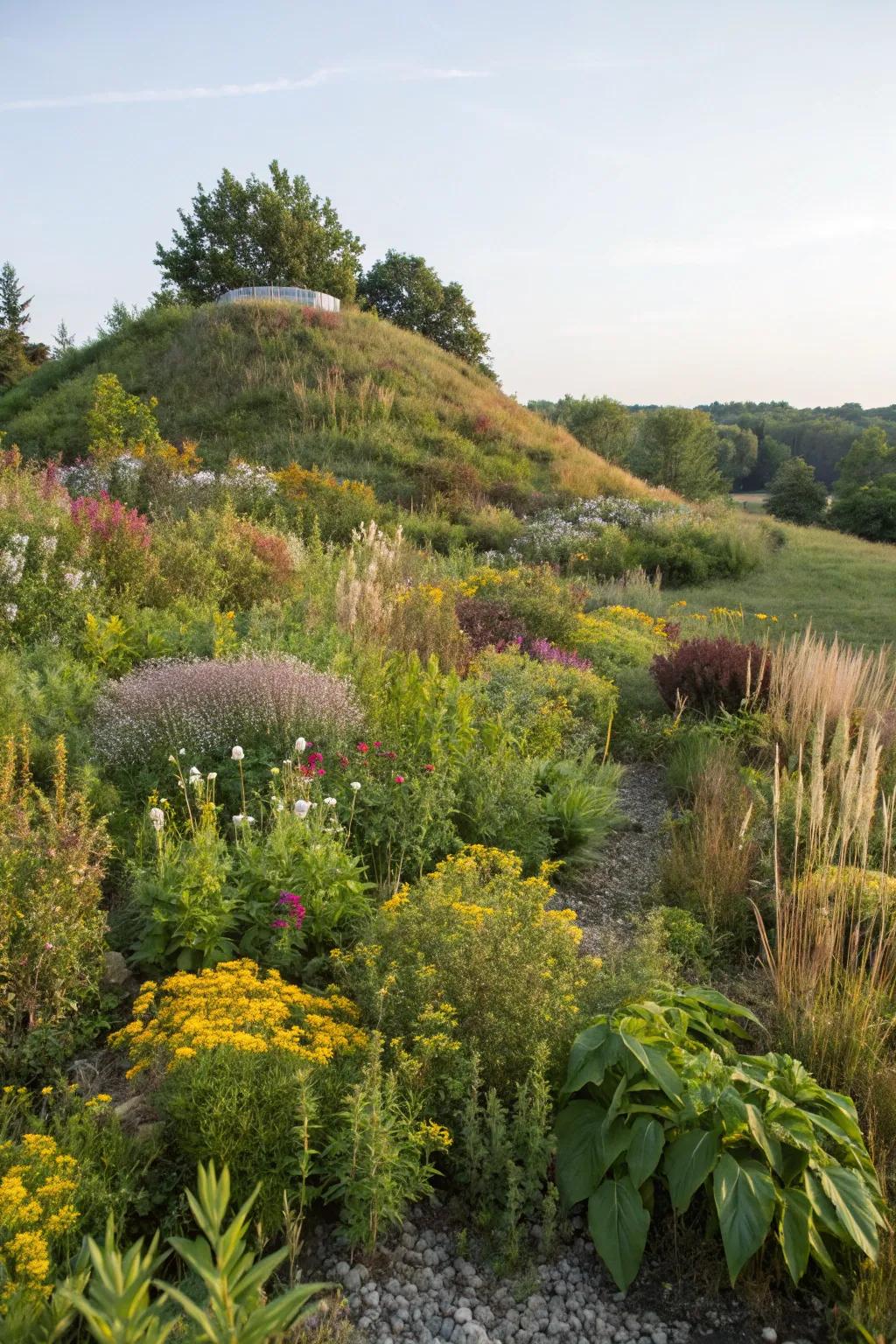
Selecting native plants ensures that your landscaping will thrive with minimal intervention. These plants are adapted to your climate and can offer beautiful, sustainable greenery.
You might give these a try:
- Native Wildflower Seed Mix: Enhance your landscape with vibrant native wildflowers, perfect for sustainable and easy growth.
- Pollinator-Friendly Plant Collection: Attract butterflies and bees with these pollinator-friendly native plant collections for your garden.
- Native Grass Seed Pack: Create a resilient, low-maintenance lawn using a diverse blend of native grass seeds.
3. Plant Ground Covers for Erosion Control
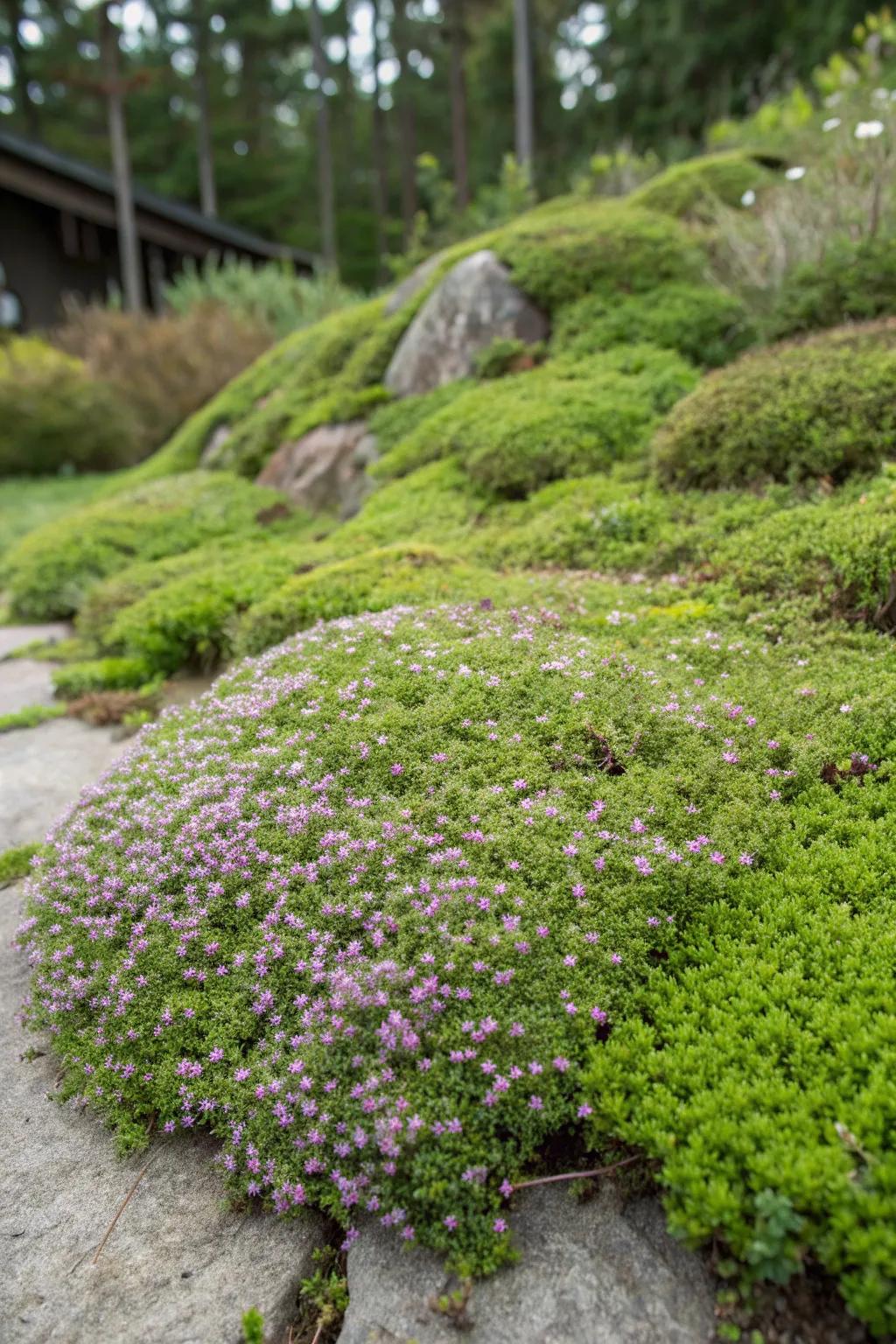
Ground covers like creeping thyme or sedum help reduce erosion and add a lush carpet of green. They’re perfect for filling in spaces and require little maintenance.
Possibly handy products:
- Creeping Thyme Seeds Pack: Plant creeping thyme seeds to create a vibrant, low-maintenance ground cover that controls erosion.
- Sedum Plant Collection: Enhance your landscape with a sedum plant collection for effective erosion control and beauty.
- Landscape Fabric Pegs: Secure your ground covers with easy-to-use landscape fabric pegs for lasting erosion control.
4. Decorate with Natural Logs
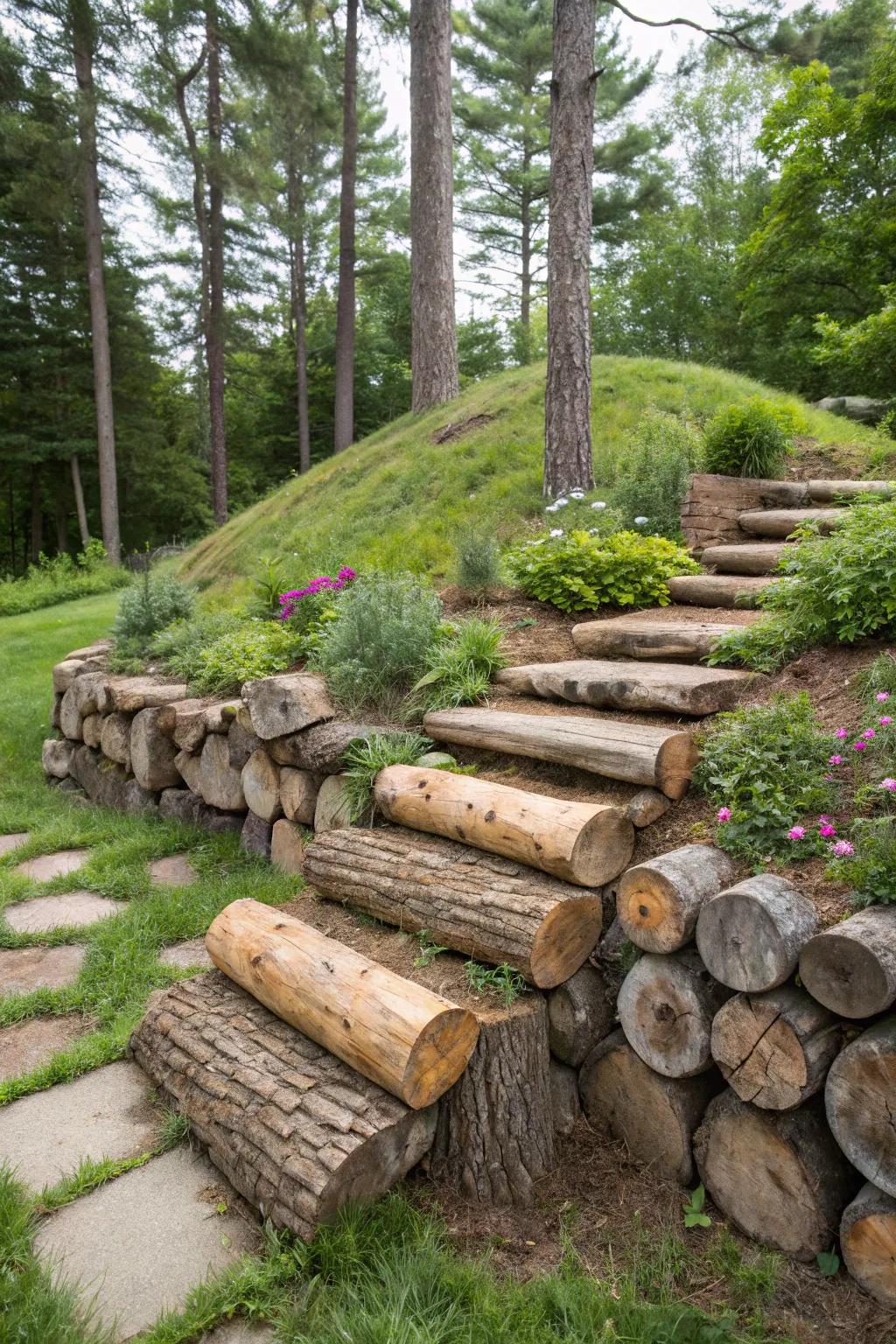
Using natural logs as borders or seating can add a rustic charm to your landscape. They blend seamlessly with the environment and provide functional elements.
A few helpful options:
- Natural Wooden Log Edging: Enhance your landscape’s rustic charm with natural wooden log edging, seamlessly blending with the environment.
- Rustic Wooden Log Bench: Add rustic seating to your garden with a durable wooden log bench, perfect for outdoor relaxation.
- Natural Log Stepping Stones: Create a unique pathway with natural log stepping stones, adding character to your landscape design.
5. Use Lighting for Nighttime Appeal
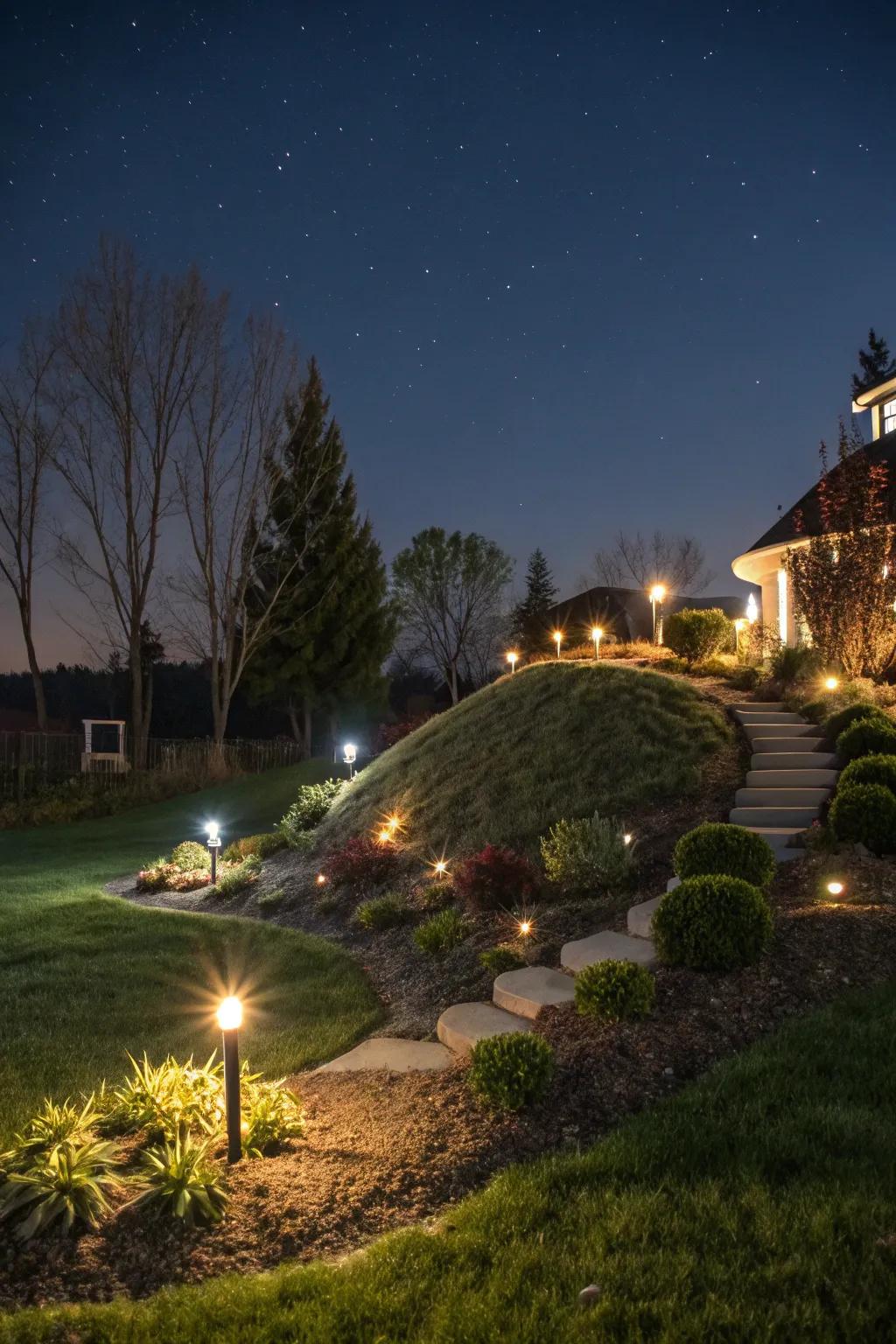
Strategically placed solar lights can highlight the beauty of your mound even at night. They create a magical ambiance that transforms the space after sunset.
These products might be useful:
- Solar Pathway Lights: Illuminate your pathways with eco-friendly solar lights for a safe and enchanting nighttime experience.
- LED Solar Garden Lights: Enhance your garden’s appeal with beautiful LED lights that automatically light up at dusk.
- Decorative Solar Lanterns: Add charm to your garden with decorative solar lanterns that provide a warm, inviting glow.
6. Add Artistic Sculptures
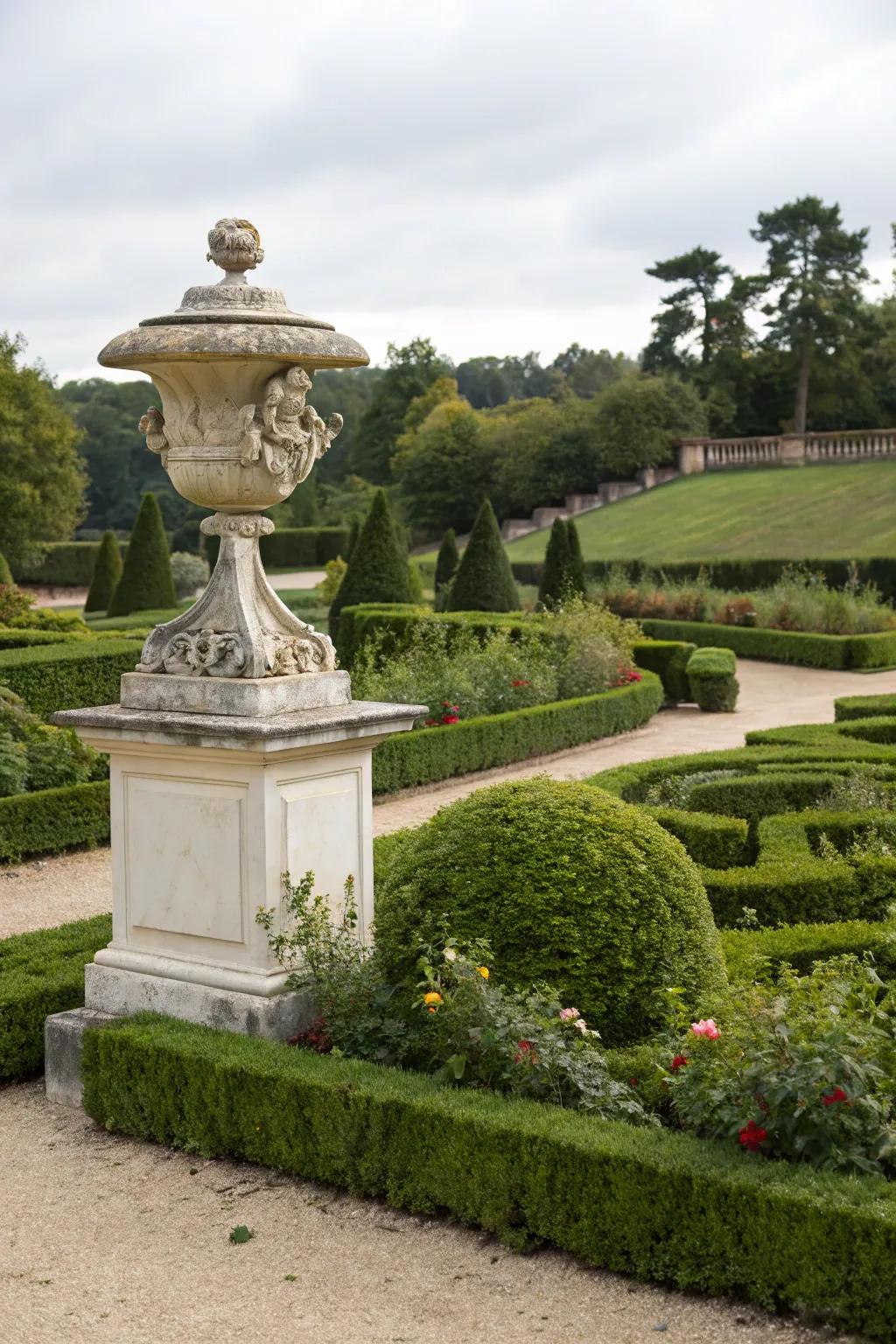
Incorporating an artistic sculpture can make your septic mound a centerpiece of creativity. Choose something that resonates with your personality or complements your garden’s theme.
Some ideas to consider:
- Classic Stone Garden Urn Sculpture: Enhance your garden with a timeless stone urn that exudes elegance and classic charm.
- Decorative Pedestal for Garden Sculptures: Elevate your artistic pieces with a sturdy pedestal, adding stature and prominence to your display.
- Traditional Grecian Statue for Outdoors: Bring historical allure to your landscape with a striking Grecian-inspired outdoor statue.
7. Create a Pathway with Stepping Stones
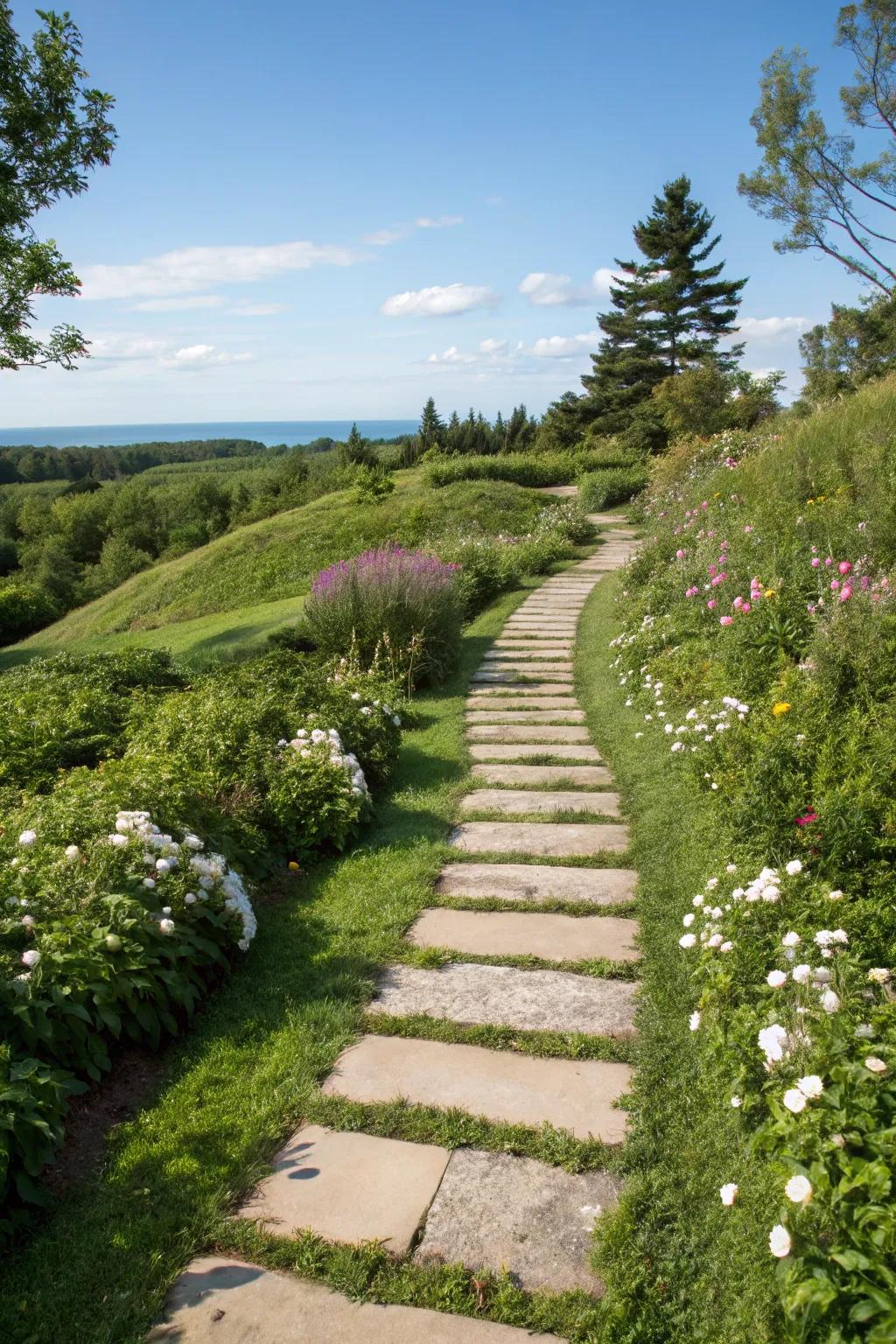
A pathway of stepping stones can guide visitors over or around your mound while adding charm. I love picking unique stones that add character and invite exploration.
Check if these fit your needs:
- Decorative Garden Stepping Stones: Enhance your path with unique stones that invite exploration and add elegance to your garden.
- Outdoor Pathway Lighting: Illuminate your stone path beautifully with pathway lights for an enchanting evening ambiance.
- Garden Edging Border: Define your stepping stone pathway with sleek garden edging to maintain a neat appearance.
8. Incorporate a Fire Pit Area
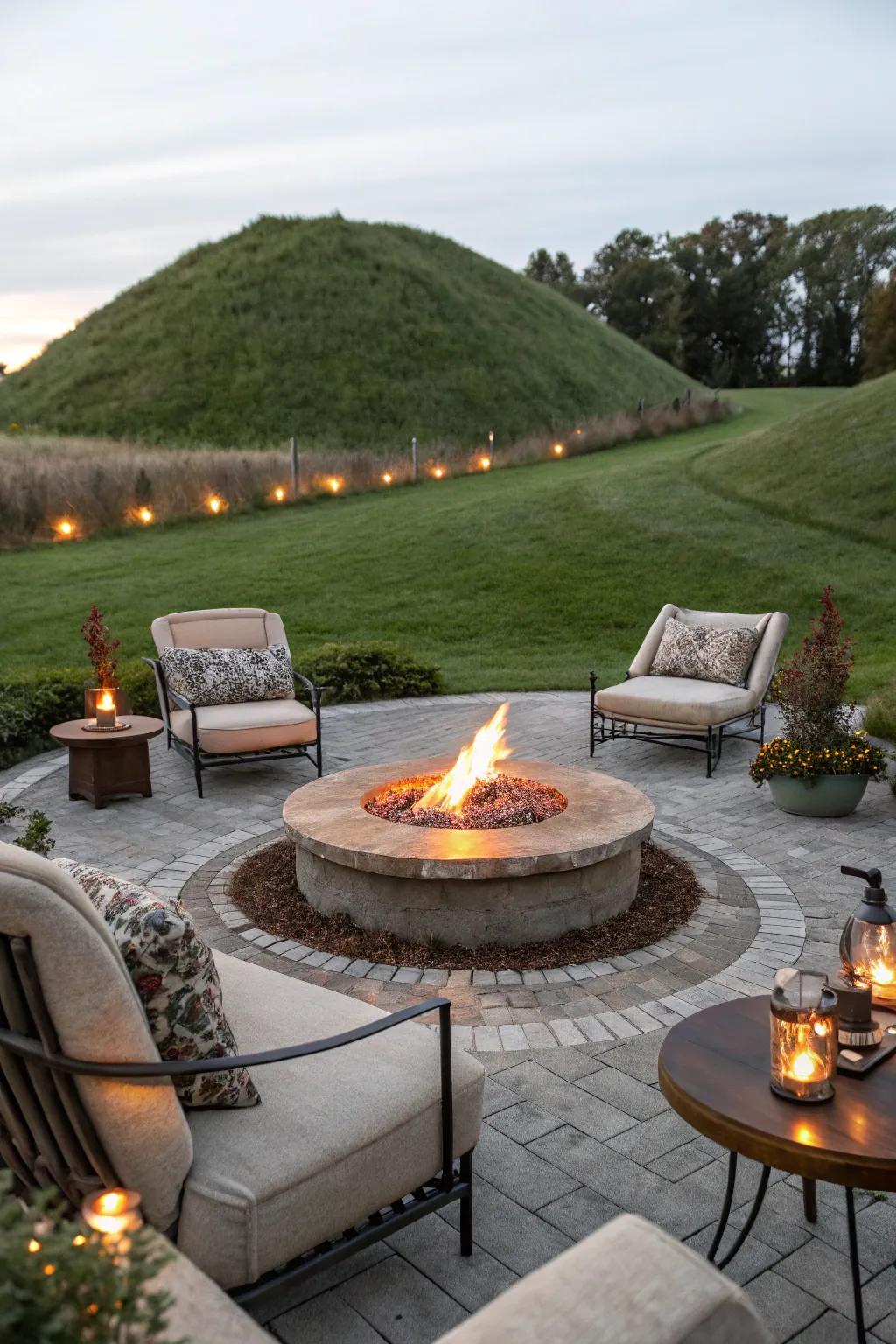
A fire pit near your mound can create a warm gathering spot for friends and family. Imagine cozy evenings spent around the fire with loved ones.
Try these:
- Outdoor Fire Pit: Gather around a cozy fire pit for warmth and ambiance on cool evenings with friends.
- Patio Lounge Chairs: Relax in stylish patio lounge chairs, perfect for comfort around your fire pit area.
- Outdoor LED String Lights: Enhance the mood with ambient LED string lights, adding charm to your fire pit area.
9. Use Edible Plants for Practicality
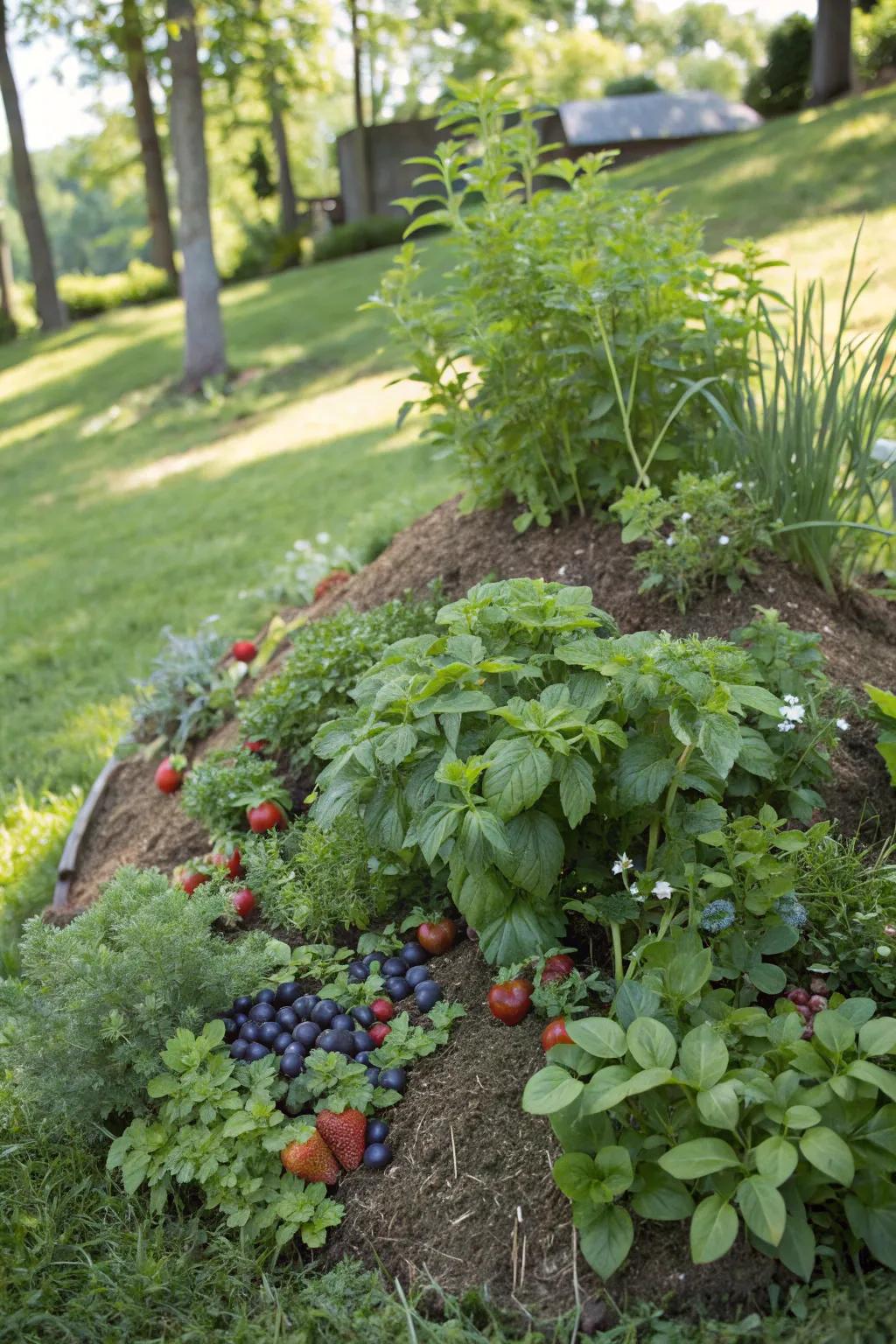
Consider planting some edible herbs or small fruit bushes that won’t interfere with the septic system. They’re not only useful but add a delightful aroma to the garden.
A few suggestions:
- Herb Garden Starter Kit: Begin your aromatic herb garden with a starter kit perfect for culinary delights.
- Fruit Bush Seedlings: Plant durable fruit bushes for tasty treats that thrive without disturbing your septic system.
- Compostable Garden Mulch: Enhance growth and nutrition with eco-friendly mulch, suitable for edible garden beds.
10. Incorporate Low-Maintenance Shrubs
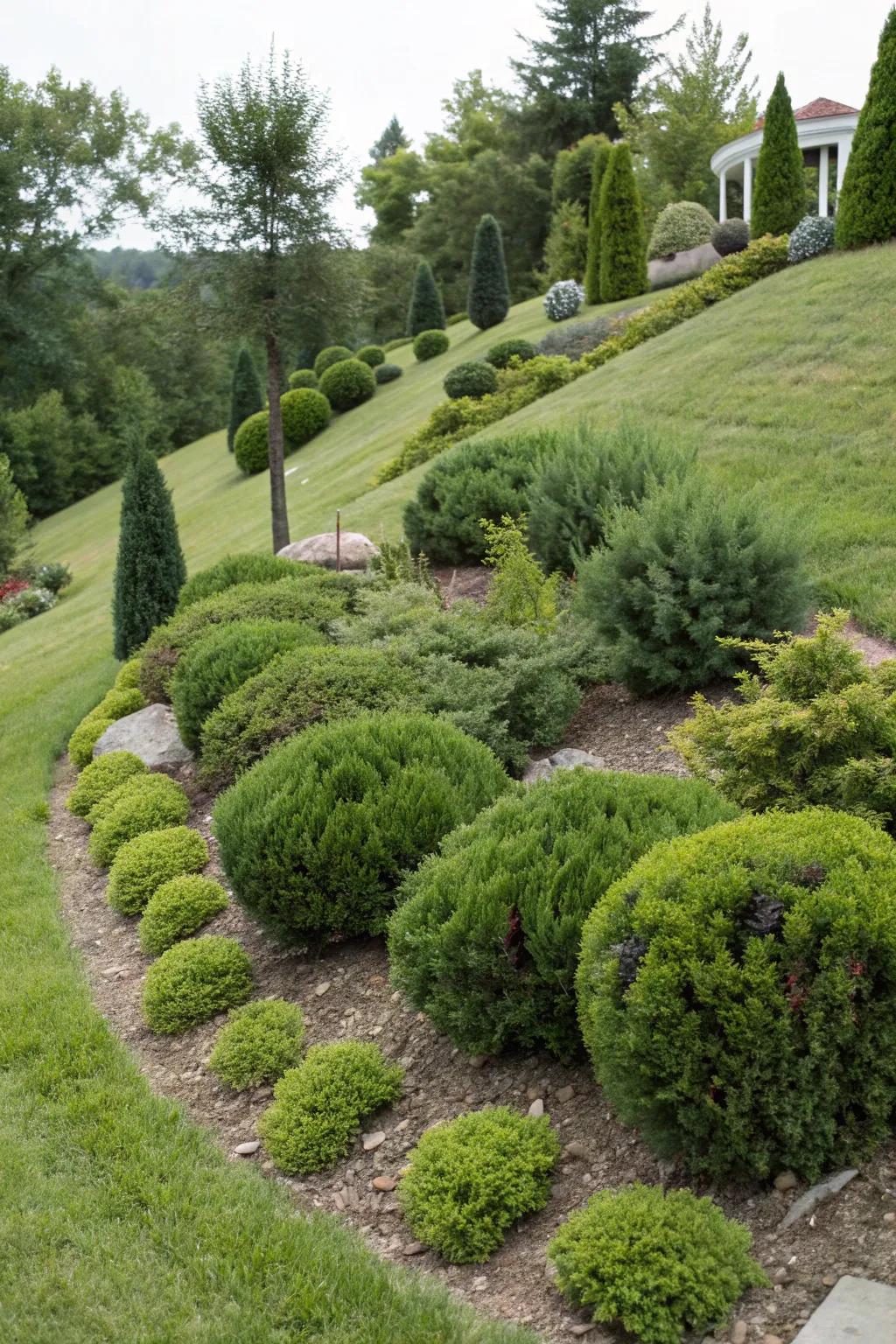
Shrubs like junipers or bush honeysuckle are robust and add structure to your landscaping. They’re great for providing year-round greenery with minimal upkeep.
A few things you might like:
- Dwarf Juniper Shrub: Add evergreen beauty with reduced maintenance for a consistent and tidy look year-round.
- Bush Honeysuckle Plant: Enhance your garden’s structure with resilient honeysuckle that thrives with minimal care.
- Shrub Fertilizer Spikes: Boost your shrubs’ growth easily using convenient, nutrient-rich fertilizer spikes.
11. Install a Rock Garden
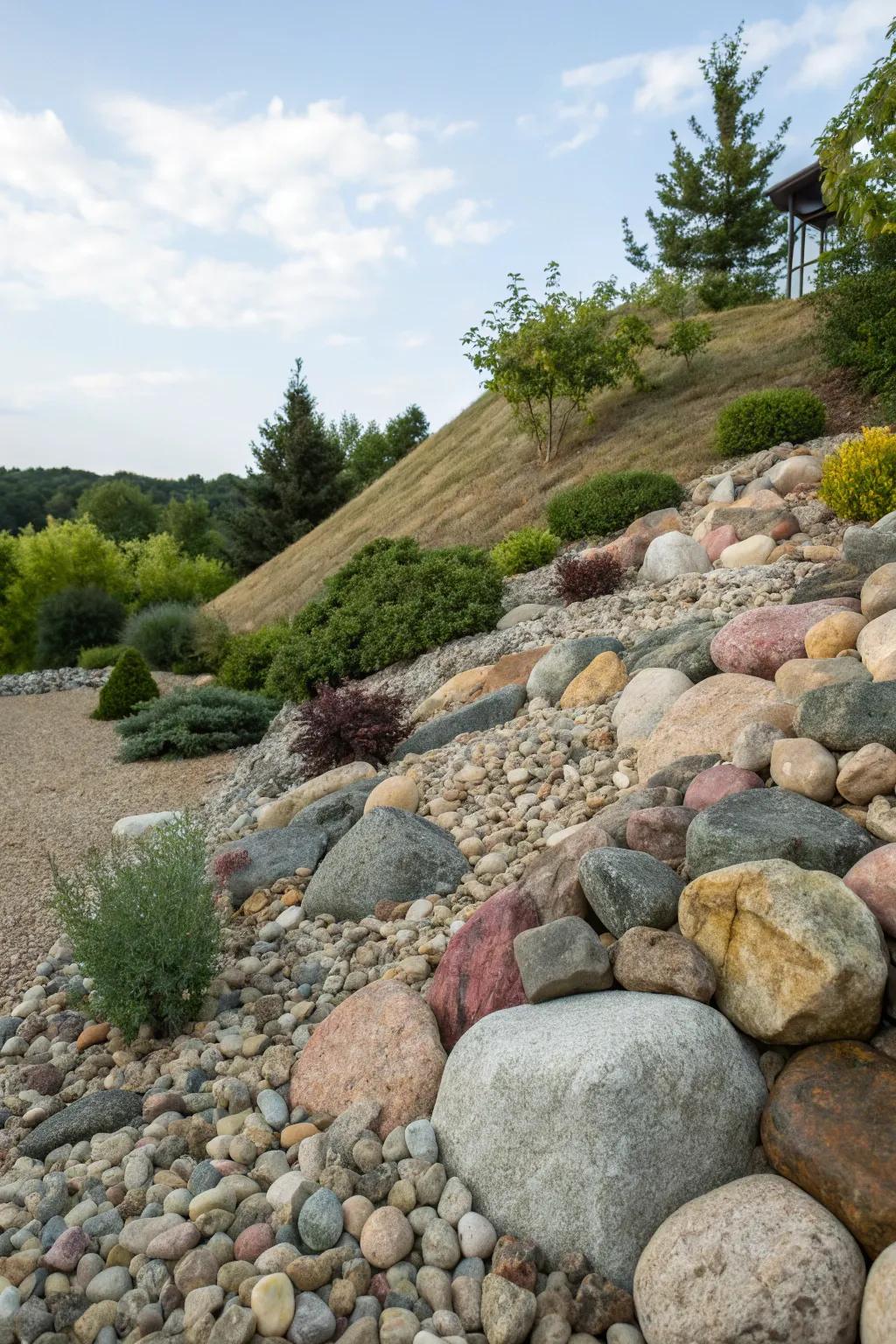
Using rocks and boulders can give your mound a natural and rugged feel. I find it fascinating to combine different sizes and colors of stones to create a visually striking feature.
A few relevant products:
- Assorted Decorative Landscape Rocks: Enhance your garden with these colorful stones for a vibrant, natural aesthetic.
- Garden Boulders for Landscaping: Create a striking focal point with these durable boulders crafted for outdoor use.
- River Pebbles for Rock Garden: Add a touch of tranquility with smooth, river pebbles perfect for garden pathways.
12. Add a Water Feature
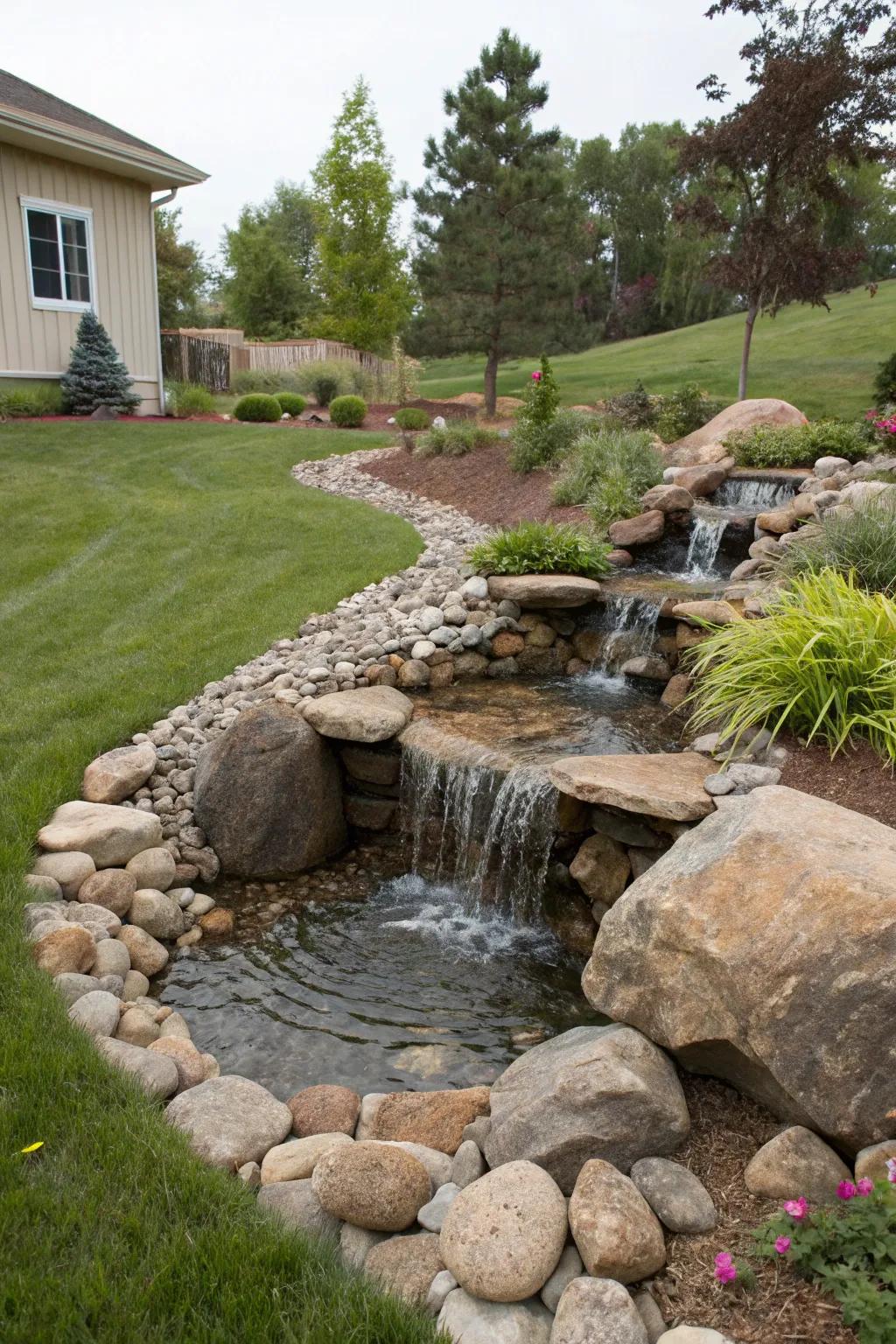
Incorporating a small water feature can add soothing sounds and a cooling element to your mound. I always find that water features bring an extra layer of serenity to the garden.
A few choices to try:
- Garden Fountain Pump Kit: Install this efficient pump to keep your water feature flowing smoothly and softly all day.
- Outdoor Waterfall Rock Set: Create natural-looking waterfalls with these durable faux rocks for a stunning garden centerpiece.
- LED Pond Lights: Highlight your water feature at night with these energy-efficient LED pond lights.
13. Design with Ornamental Grasses

Ornamental grasses are perfect for mound systems because they are hardy and require little maintenance. They sway beautifully in the breeze, adding a soft, dynamic element to your landscape.
May just do the trick:
- Ornamental Grass Seed Mix: Enhance your landscape with easy-to-grow ornamental grasses. Perfect for low-maintenance beauty and movement.
- Garden Soil for Ornamental Grasses: Foster healthy growth in your ornamental grasses with this nutrient-rich garden soil. Nurture effortlessly.
- Decorative Outdoor Planter Pots: Showcase your ornamental grasses in style with these durable and elegant planter pots.
14. Add a Bench for Relaxation
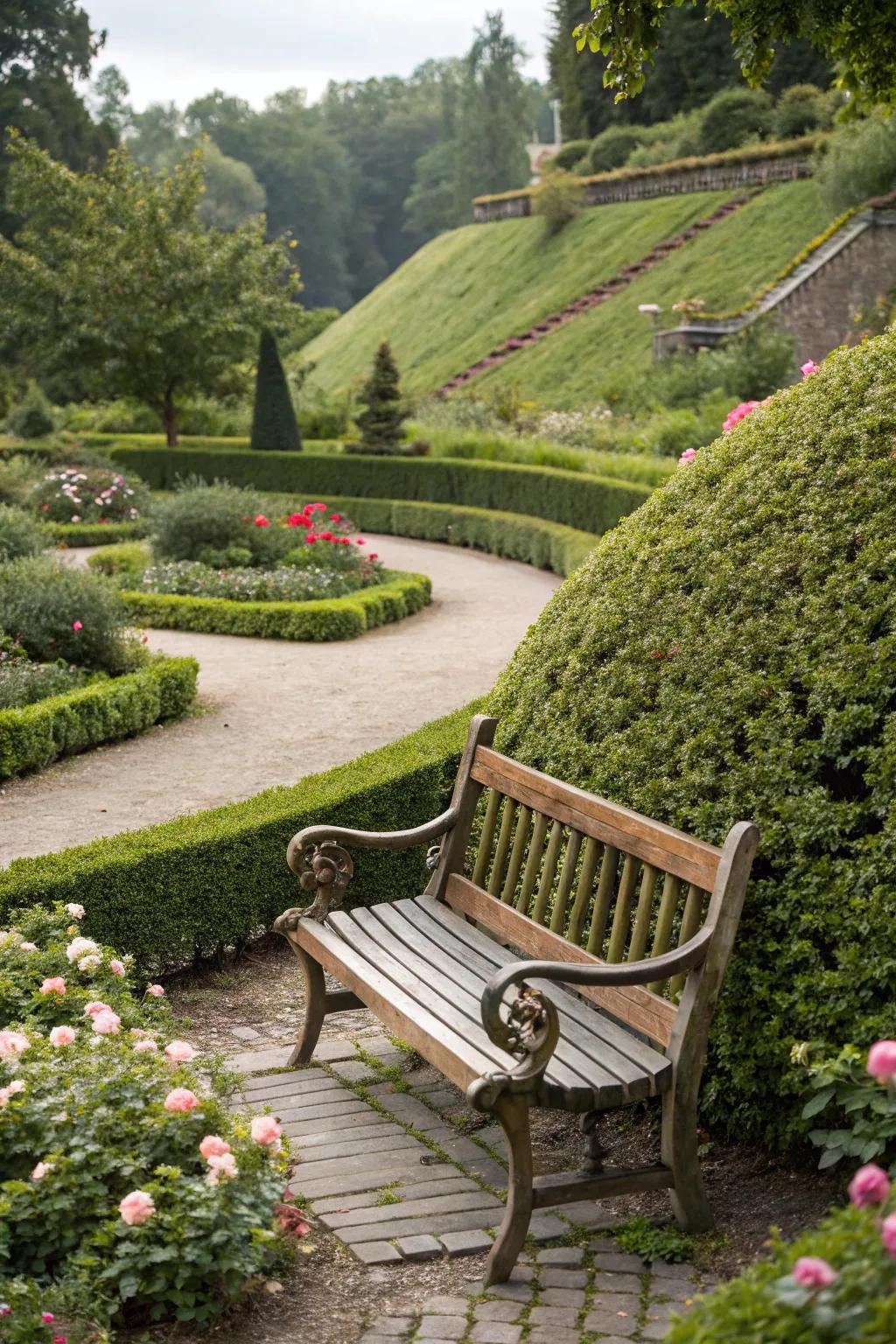
Placing a bench near your landscaped mound invites visitors to sit and enjoy the view. It’s my go-to spot for unwinding with a good book.
Consider these options:
- Outdoor Wooden Garden Bench: Enhance your garden’s charm with a rustic wooden bench. Perfect for relaxing amidst nature’s beauty.
- Garden Bench Cushion: Add comfort to your seating with a weather-resistant cushion. Ideal for extended outdoor enjoyment.
- Decorative Garden Lighting: Illuminate your seating area with soft garden lights. Create a cozy atmosphere after sunset.
15. Build a Mini Zen Garden
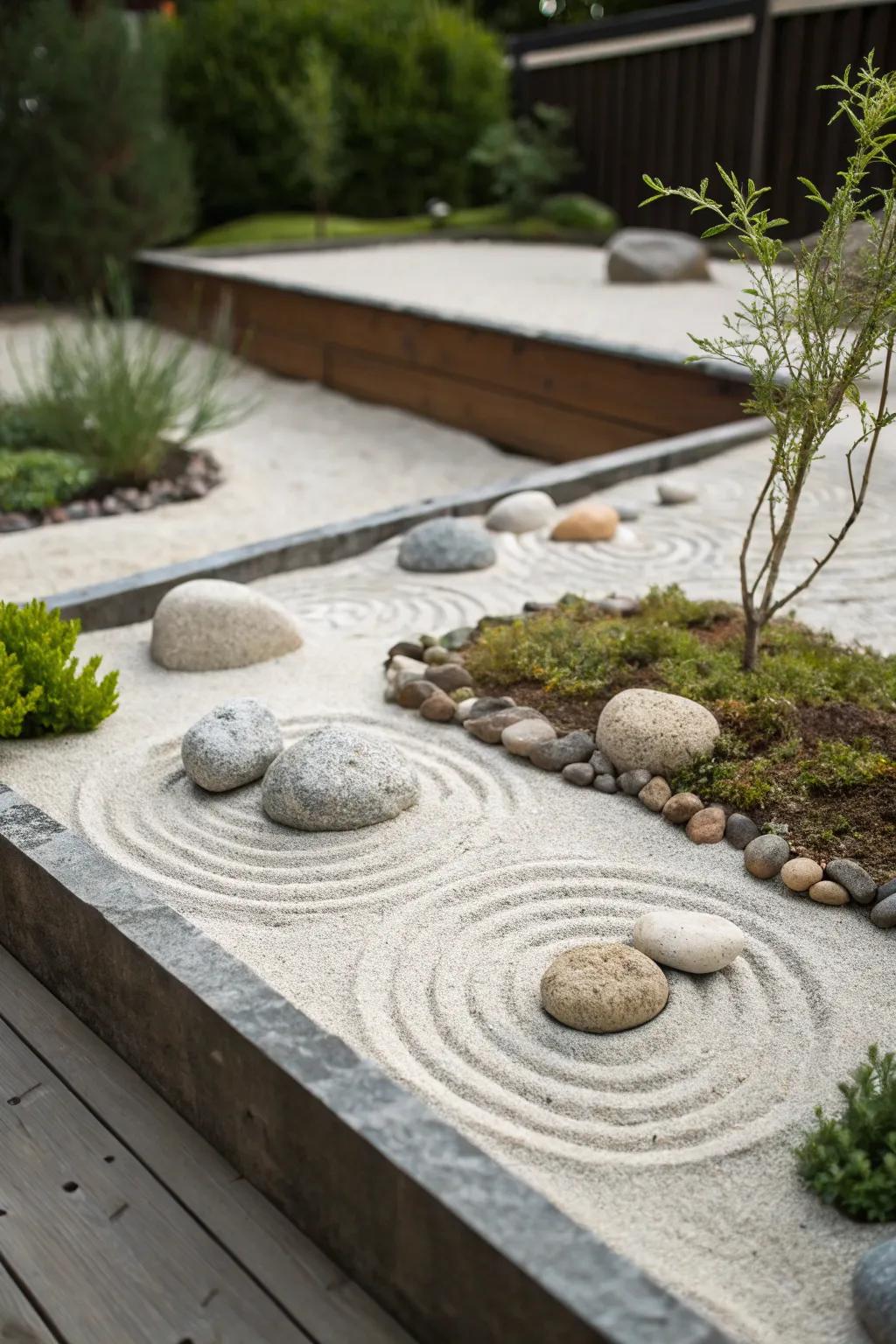
A mini Zen garden with sand, stones, and a few carefully placed plants can create a peaceful retreat. It’s the perfect spot for meditation or simply enjoying the tranquility.
Possibly helpful picks:
- Decorative Garden Sand: Enhance your Zen garden tranquility with fine, white decorative sand for easy raking and design.
- Smooth River Stones: Place smooth, natural river stones to add texture and depth to your mini Zen garden escape.
- Miniature Garden Rake: Craft intricate sand patterns in your Zen garden with a handy, easy-to-use miniature rake.
16. Create a Fairy Garden
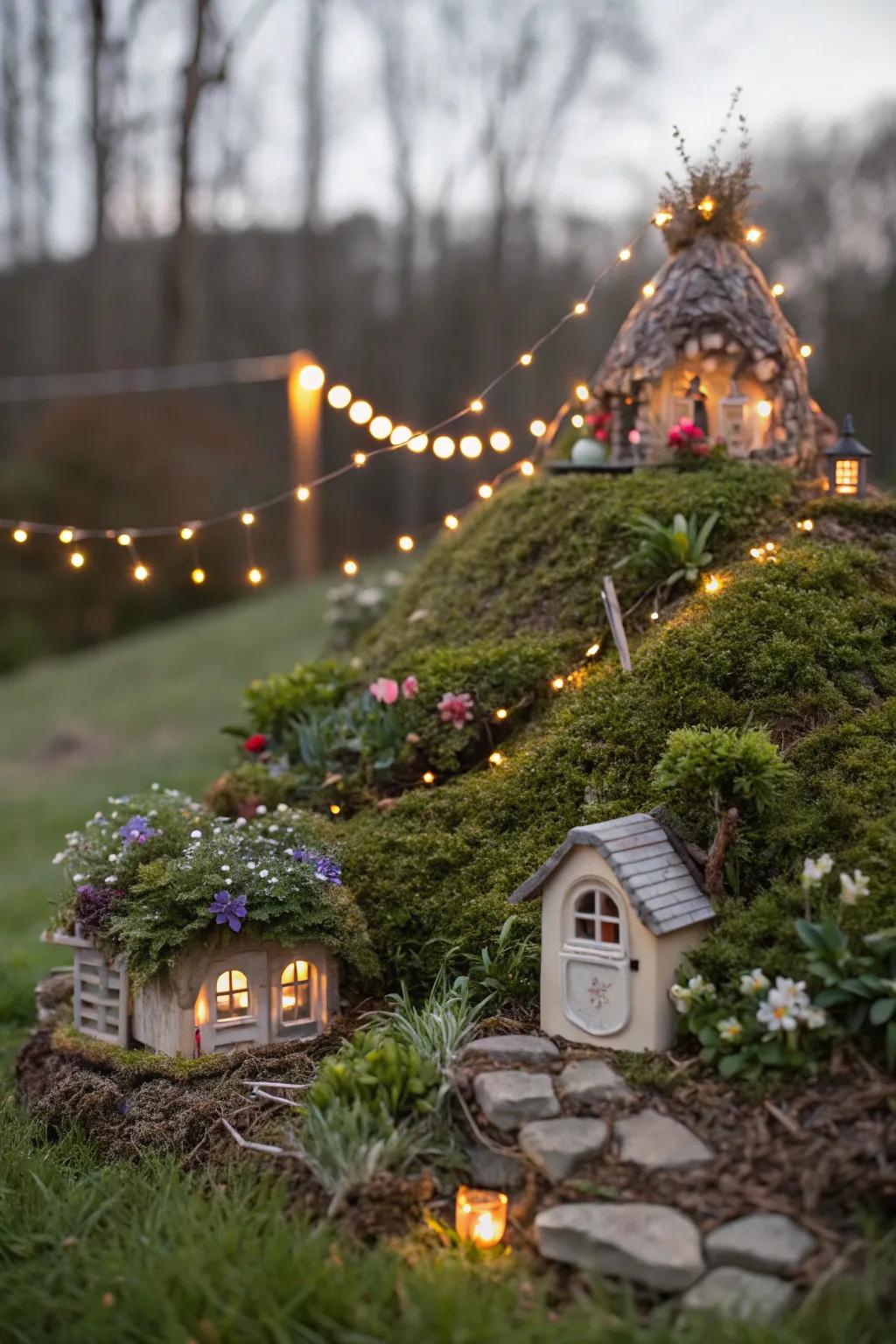
Crafting a whimsical fairy garden with tiny plants and decorations can make your mound a magical place. Kids (and the young at heart) will adore this enchanting spot.
Products that could assist:
- Miniature Fairy Garden House: Enhance your fairy garden with a charming house structure to ignite imagination and wonder.
- Solar Garden String Lights: Illuminate your garden with eco-friendly solar lights and add a magical glow to your setup.
- Miniature Garden Decorations Pack: Add detailed miniatures to your fairy garden for a more enchanting and lively scene.
